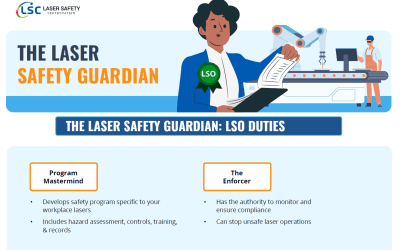Are Laser Pointers, Toys and Projectors Safe?
Buyer Beware, your laser pointer might be mis-labeled
Lasers are used in everyday life, from classroom pointers to grocery store scanners and holiday light displays. And for the most part, unless we are working in a laboratory, industrial or medical facility, we think of lasers as completely safe. However, many people purchase laser devices from online retailers with sellers located throughout the world that we know nothing about.
What to watch out for when buying laser pointers online
As consumers, we purchase products direct via the internet for its convenience and ease of use. But there are sometimes risks in making these purchases naively. Some products may be counterfeit or improperly labeled. Buyers need to be aware that there is the risk of injury from devices that may have laser power higher than what is marked on the device. They should also be aware that construction can be of poor quality and, with normal wear and tear, could cause serious eye injury.
Laser pointer hazard classification
In general, laser pointers should be restricted to Class 1 or Class 2 and sold with sufficient information to enable the user to operate the product in a safe manner. Laser toys should always be Class 1. Unfortunately, incorrectly labeled laser pointers are common. For instance, laser pointers that are marked Class 2 (with output power of 1mW) may actually be Class 3B or even Class 4. Eye injuries, especially to children, have occurred from these Class 3B and Class 4 “laser pointers”. For this reason, children should never be allowed to use a laser pointer.
The dangers of mis-labeled laser pointers
Even though the risk of permanent eye injury from a laser pointer up to Class 3R may be small, an individual receiving a transient eye exposure from a laser pointer will experience a bright, dazzling light effect which can cause distraction and temporary loss of vision. Of course, laser beams of any kind, including pointers, should never be pointed at people. This is particularly true shining a laser pointer at planes and helicopters in flight, as this poses a danger to both pilots and passengers. Doing so can result in arrest and fines.
Who is regulating this stuff?
The FDA gives examples of toys that may also pose unknown hazards: Lasers mounted on toy guns that can be used for “aiming”; Spinning tops that project laser beams while they spin; Hand-held lasers used during play as “light sabers”; and Lasers intended for entertainment that create optical effects in an open room.
Toys with lasers are of particular interest to the FDA because children can be injured by these products. Because they are marketed as toys, parents and kids alike may believe they’re safe to use.
Safe tips for use include:
Never aim at persons or animals
Do not aim at any vehicle, aircraft or shiny surface or persons playing sports
Children’s toy lasers should be Class I
Children should not be allowed to own or use laser pointers. Pointers are not toys
Do not buy or use any laser that emits more than 5 milliwatts
There are similar problems with low-cost, usually illegally imported laser light show projectors. The problem can go either way: A projector is mislabeled with a higher power so it will be more attractive to the buyer, or a projector is mislabeled with a lower power (<5 mW) so it does not trigger Class 3B or 4 import restrictions. Sometimes overseas manufacturers will copy high-quality laser projectors. They might also copy not just the physical aspects (lower quality of course) but also the label, including accession numbers, without truly knowing what should go on the label.
The message is clear…buyer beware.




